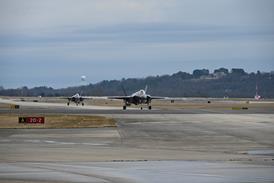Classic modification set to enter service in September
An aerodynamic modification kit for Boeing 737 Classics that offers fuel savings of between $130,000 and $150,000 per aircraft per year is set to enter service in September with operators in Canada, New Zealand and the USA.
Developed by Florida-based AvAero, the FuelMizer kit involves a minor adjustment to the inboard and outboard flap zero setting that increases trailing-edge droop by just 20mm (0.8in).
The modification, which includes new cam tracks and cable drum assemblies on the inboard flaps, increases both effective camber and wing area. Together with a 1% aileron droop, which can be rigged within current Boeing settings, this results in a 5¡ reduction in cruise angle-of-attack, and a consequent reduction in induced drag.
The modification takes effect only when flaps are retracted after take-off, after which the reduced drag decreases time-to-climb, cuts power requirement for a given altitude and airspeed and consequently increases range.
Air New Zealand, America West Airlines and an unidentified Canadian operator are expected to be the first to modify aircraft with the kit, which sells for around $120,000. "At current fuel prices, you are looking at a return on investment of about one year," says AvAero president Bob Finn, who is confident of picking up over the next two to three years "at least 1,500" of the almost 3,000 737 Classic models still in service.
The modification has been awarded a US Federal Aviation Administration supplemental type certificate (STC) for 737-200/300s and is scheduled to be expanded in early September to include the -400/500 variants.
Certification has also been granted by the European Aviation Safety Agency, as well as by authorities in Australia and New Zealand, and Transport Canada was poised to sign off the package last week.
"The reaction is basically that airlines think it's too good to be true," says Finn, adding that interest is particularly high among 737-200 users, most of which are outside the USA. "The people with JT8D-powered 737s are even more interested because those models are fuel goats."
The modification was flight-tested intensively over a six-month period on a 737 based at Mojave, California, says Finn, who adds that the adjustments were fine-tuned. "If we tweaked it too much the economy fell way off, we had to find the sweet spot," he says.
AvAero stresses that the modification does not limit the flaps in normal operation or travel. "All flap settings in the cockpit still read what they always did," says Finn.
GUY NORRIS / LOS ANGELES

Source: Flight International























